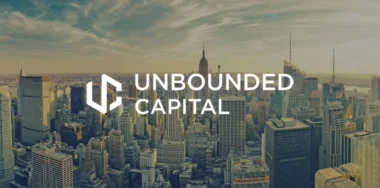|
Getting your Trinity Audio player ready...
|
The BSV Claims Limited collective proceeding against four digital asset exchanges that delisted the BSV token in April 2019 has been certified and will proceed to trial in the United Kingdom.
In June, a hearing was conducted at London’s Competition Appeal Tribunal (CAT) in the collective proceedings—basically, the U.K. equivalent of a class action lawsuit—filed in August 2022 by BSV Claims Limited under the command of Lord Currie of Marylebone, a venerated consumer rights warrior and the CAT’s founding chairman.
The suit accuses four digital asset exchanges—Binance, Bittylicious, Kraken and Shapeshift—of violating the Competition Act 1998 through their collective delisting of the BSV token in 2019.
On July 26, the CAT unanimously granted the application for certification, ruling that the threshold for approving the claim had been met. The CAT rejected Binance’s bid to strike out the claim, saying the matter involves findings of fact that can only be determined at trial.
The CAT did agree with Binance that there was some question as to whether BSV holders were under an obligation to take reasonable steps to mitigate their losses, i.e. sell their BSV before the delistings took their full toll on the token. This matter will likely be resolved at a preliminary issue trial ahead of the full trial.
Regardless, it’s a clear victory for the hundreds of thousands of BSV token holders who suffered by the actions of these exchanges. The trial is likely to expose the true motivations behind the delisting of BSV.
How we got here
Binance founder (and current U.S. federal prison inmate) Changpeng ‘CZ’ Zhao got the ball rolling in April 2019 by publicly declaring his intention to delist BSV from Binance, the world’s largest exchange by trading volume. This move was followed within 24 hours by the exchanges cited above. Later, more exchanges joined the delisting party due to the resulting negative impact on BSV’s trading volume/fiat value.
Prominent mining pools dropped support for BSV as its fiat value decreased, resulting in further downward pressure. Meanwhile, exchanges like Coinbase (NASDAQ: COIN) opted against listing BSV at all, despite Coinbase’s propensity for listing every purpose-free memecoin under the sun, particularly those in which its venture capital arm has a stake.
Binance co-founder Yi He recently did a Twitter/X Space for the exchange’s Mandarin-speaking customers in which she was asked about Binance’s delisting standards. Yi He noted that “delisting causes harm to both project parties and token holders, so we strive to remain objective.” Quite.
She added that the exchange conducted “detailed analysis to ensure accurate decisions.” Presumably that did not involve working out how many innocent investors in BSV would be harmed by the cartel (estimated by a leading firm of economists to be 240,000).
There’s no question of the harm suffered by the customers of the four exchanges named in the suit. Some of them were even told to pull their tokens off the exchanges ASAP before they were forcibly converted to other tokens (including BTC).
Flawed logic
In a preliminary hearing to certify the suit under the class action rules for U.K. competition cases, Binance’s attorneys argued that the exchange owed BSV holders nothing, claiming that these customers had suffered due to their own “entirely voluntary decision[s].” Binance’s lawyers argued that customers had been given the option of selling their BSV and using the proceeds to acquire a “comparable cryptocurrency.”
With respect, this is absurd. You can’t deliberately damage an asset with a cartel and then complain that the owner should have sold it. Nor would BSV holders be happy with BTC as a substitute for BSV—they would no doubt point out that BSV is special, which is why they chose it in the first place.
BSV is the only blockchain that can trace an unbroken path back to Bitcoin’s Genesis block. It’s the only blockchain with a locked protocol that guarantees it will never deviate from the visionary path laid down by Satoshi Nakamoto in 2008. It’s the only chain committed to unbounded scaling to handle enterprise- and government-level data needs. The only chain that can combine with IPv6 and artificial intelligence (AI) to create Metanet, the internet of the future—and the BSV token is the ‘currency’ that will connect all these elements.
As such—to paraphrase MicroStrategy (NASDAQ: MSTR) boss Michael Saylor—there is no digital asset comparable to BSV. It’s like asking someone to trade their 1957 Goldtop Gibson Les Paul for some cheap Chinese-made Stratocaster. You could make that trade, but you’d end up committed to an institution by your friends and family who’d grown concerned over your powers of reasoning.
Birds of a feather collude together
Adam Smith’s The Wealth of Nations contains a lot of famous quotes, but for the moment, let’s focus on this one: “People of the same trade seldom meet together, even for merriment and diversion, but the conversation ends in a conspiracy against the public, or in some contrivance to raise prices.”
In the wake of the FTX exchange’s November 2022 implosion, both the New York Times and the Wall Street Journal revealed details on an exclusive group chat on the Signal encrypted messaging platform called ‘Exchange coordination.’ Participants included CZ, Kraken’s then-CEO Jesse Powell, FTX founder Sam Bankman-Fried, Tron founder Justin Sun and Paolo Ardoino representing the Tether (USDT) stablecoin.
In the class action, BSV Claims Limited is saying that the four exchanges cited in the CPO colluded—or, ‘coordinated’—to throw sand in BSV’s gears. But what was the ultimate aim behind these exchanges delisting BSV? Why go through the risk of not only engaging in anti-competitive tactics, but to do it so publicly? As the saying goes, follow the money.
CZ originally claimed the delisting was in response to lawsuits filed against some BTC social media influencers by Dr. Craig S. Wright, a figure firmly linked to BSV in the public consciousness. But CZ let the mask slip the very next day by admitting his annoyance at BSV causing BTC’s fiat value to slip below a certain point, presumably triggering some liquidation of his pals’ (or his own) derivative bets.
Cui bono?
Make no mistake, there are some powerful players who would like to see the utility-focused BSV die on the vine, including Blockstream, whose developers played a key role in constraining Bitcoin’s ability to expand beyond its original limits (which Satoshi always intended as temporary, according to his emails to developer Mike Hearn).
These developers wanted to force customers onto their proprietary ‘Layer 2’ Lightning Network that never seems to work (and keeps exposing customers to potentially catastrophic losses). BSV, which can do it all on its ever-expanding and secure main layer, has no need for Layer 2’s.
MicroStrategy’s Saylor wants to preserve the hobbled version of Bitcoin (BTC) as ‘digital gold,’ an inert shiny brick good only as collateral to borrow actual money. Over the past few years, Saylor has transformed MicroStrategy into a BTC holding company. The success of a blockchain like BSV, that prioritizes function over form, would chip away at BTC’s ‘store of value’ mantra—not to mention MicroStrategy’s share price.
Exchanges like Coinbase and Kraken want to continue earning lucrative commissions from listing and promoting utility-free memecoins as the next can’t-miss get-rich-quick scheme. BSV is the antithesis of a casino chip fed into the ‘To the Moon’ slot machine that only pays off for pump-and-dump insiders.
BSV’s scalability enables true peer-to-peer transactions, without intermediaries, at a cost measured in fractions of a cent, making it ideal for micro- and nano-payments. What other blockchain—particularly one as limited at BTC—would want to compare itself in public to BSV?
Ask yourself this: which blockchain more accurately resembles Satoshi’s statement that Bitcoin “never really hits a scale ceiling;” BSV, with its blocks measured in gigabytes, or BTC, with its measly four-megabyte cap?
Which chain honors the white paper’s commitment to “allowing any two willing parties to transact directly with each other without the need for a trusted third party;” BSV, with its ability to process millions of transactions in a single block at virtually no cost to users, or BTC, which forces users onto Blockstream’s proprietary Layer 2, the very definition of a fiscal intermediary?
Meanwhile, BSV continues to honor the (original) Satoshi tradition through innovations like Teranode, which prove that Satoshi’s original plan for Bitcoin was correct.
Proof of the Pudding
The BSV Claims exchanges haven’t seen fit to relist BSV following the recent U.K. court ruling that Craig Wright is not Satoshi. If their battle was with Wright, that battle is now over.
Indeed, the Crypto Open Patent Alliance (COPA) judge’s decision to announce his preliminary verdict from the bench rather than make people wait for his written ruling seems to suggest that it was relatively easy to conclude that Wright’s claims weren’t taken all that seriously.
The fact that the exchanges have offered no indication that BSV will be welcomed back onto their platforms suggests their real problem was always with the technology, not an otherwise obscure Australian polymath.
As the original Bitcoin, utility-focused BSV is the very definition of disruptive technology. Unbounded scaling, low transaction fees, an environmentally responsible proof-of-work consensus mechanism, a locked protocol, the only blockchain that can scale to meet the needs of governments and enterprises … what’s not to love?
Or to fear, if your business depends on no one knowing that blockchains are capable of doing anything more than ‘number go up.’ Small wonder then, that the protocols focused solely on financial speculation—and the exchanges whose business model relies on endless token flipping in the pursuit of quick riches—felt threatened by BSV’s rising profile.
There’s no question that this anti-competitive attack led to an immediate and precipitous drop in the BSV token’s value and has had a hamstringing effect ever since.
There seems little reason to doubt that BSV would have at least matched BTC’s price but for the delistings, and that is before taking into account the technical superiority of the BSV product. The exchanges were both the cause and the catalyst for this significant and unwarranted decline, and they should be made to pay for the harm they inflicted on so many BSV holders.
But this is an offense that goes far beyond a couple hundred thousand BSV holders. Given BSV’s unique utility and its ability to create a multi-trillion-dollar ecosystem on Metanet, the delistings are responsible for suppressing the arrival of the internet of the future. This is an offense against the global population, the damages almost incalculable in their immensity. As a wise old Roman once observed, let the punishment fit the crime.
Watch: Teranode & the Web3 world with edge-to-edge electronic value system
New to blockchain? Check out CoinGeek’s Blockchain for Beginners section, the ultimate resource guide to learn more about blockchain technology.








